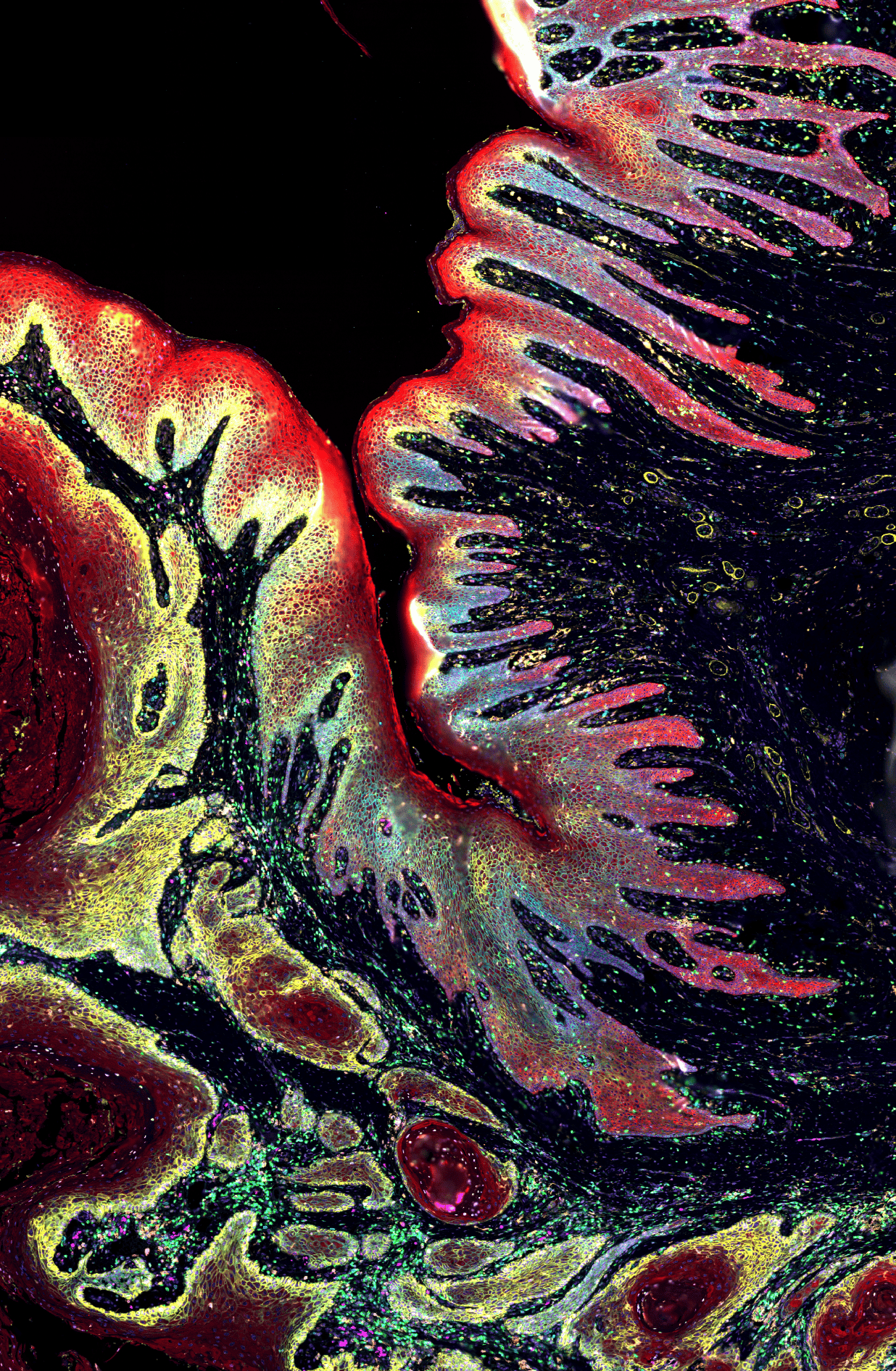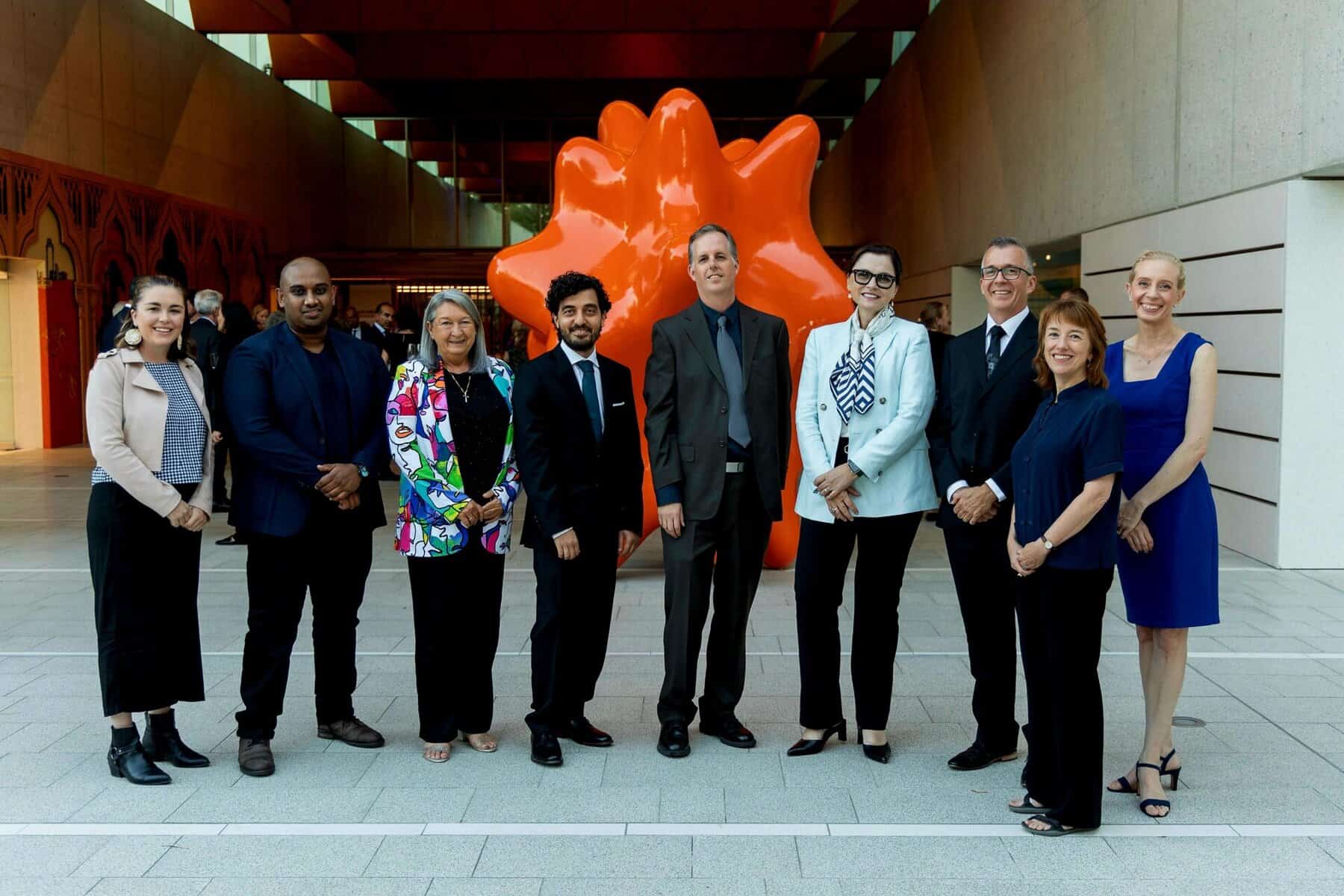
A breathtaking image capturing the intricate details of skin cancer has earned the Queensland Spatial Biology Centre (QSBC) scientists the prestigious 2025 National Health and Medical Research Council (NHMRC) Science to Art Award.
The winning visual, produced using Wesley Research Institute’s Phenocycler, showcases the skin’s outermost layer – the epidermis – and the dermis beneath it, revealing a complex network of blood vessels, nerves, sweat glands, collagen and hair follicles.

Associate Professor Arutha Kulasinghe, Scientific Director of QSBC, travelled to Canberra to accept the award on behalf of his teams at QSBC and the University of Queensland.
“The image is from skin tissues showing the epidermis and the layers of tissue architecture as you move into the dermis,” said Associate Professor Kulasinghe.
“We have skin cancer emerging, which we’re characterising using spatial approaches. This allows us to digitise patients’ tumours and understand the changes occurring histologically, cell by cell.
“Referred to as the ‘Google Maps’ approach to tissue profiling, this revolutionary approach can be used to map every cell across different tumour types and tissues to unravel why some tumours respond to treatment while others do not.
Better understanding of the tumour microenvironment for each individual patient would allow for treatment and therapy personalisation to improve the care and outcomes for individuals affected by cancer
Associate Professor Kulasinghe
Funded by the University of Queensland, the project resulting in the image highlights the transformative potential of spatial biology in cancer research.
The striking image advances scientific understanding while also bridges science and art.
Learn more about the work of the Queensland Spatial Biology Centre (QSBC).



Photos taken by Hilary Wardhaugh Photography.